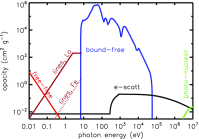Kilonovae
- PMID: 28579916
- PMCID: PMC5434174
- DOI: 10.1007/s41114-017-0006-z
Kilonovae
Abstract
The mergers of double neutron star (NS-NS) and black hole (BH)-NS binaries are promising gravitational wave (GW) sources for Advanced LIGO and future GW detectors. The neutron-rich ejecta from such merger events undergoes rapid neutron capture (r-process) nucleosynthesis, enriching our Galaxy with rare heavy elements like gold and platinum. The radioactive decay of these unstable nuclei also powers a rapidly evolving, supernova-like transient known as a "kilonova" (also known as "macronova"). Kilonovae are an approximately isotropic electromagnetic counterpart to the GW signal, which also provides a unique and direct probe of an important, if not dominant, r-process site. I review the history and physics of kilonovae, leading to the current paradigm of week-long emission with a spectral peak at near-infrared wavelengths. Using a simple light curve model to illustrate the basic physics, I introduce potentially important variations on this canonical picture, including: [Formula: see text]day-long optical ("blue") emission from lanthanide-free components of the ejecta; [Formula: see text]hour-long precursor UV/blue emission, powered by the decay of free neutrons in the outermost ejecta layers; and enhanced emission due to energy input from a long-lived central engine, such as an accreting BH or millisecond magnetar. I assess the prospects of kilonova detection following future GW detections of NS-NS/BH-NS mergers in light of the recent follow-up campaign of the LIGO binary BH-BH mergers.
Keywords: Black holes; Gravitational waves; Neutron stars; Nucleosynthesis; Radiative transfer.
Figures













References
-
- Abadie J, et al. Predictions for the rates of compact binary coalescences observable by ground-based gravitational-wave detectors. Class Quantum Gravity. 2010;27(173):001.
-
- Abbott BP, et al. Binary black hole mergers in the first advanced LIGO observing run. Phys Rev X. 2016;6(4):041015.
-
- Abbott BP, et al. Localization and broadband follow-up of the gravitational-wave transient GW150914. Astrophys J Lett. 2016;826:L13. doi: 10.3847/2041-8205/826/1/L13. - DOI
Publication types
LinkOut - more resources
Full Text Sources
Other Literature Sources
Miscellaneous
